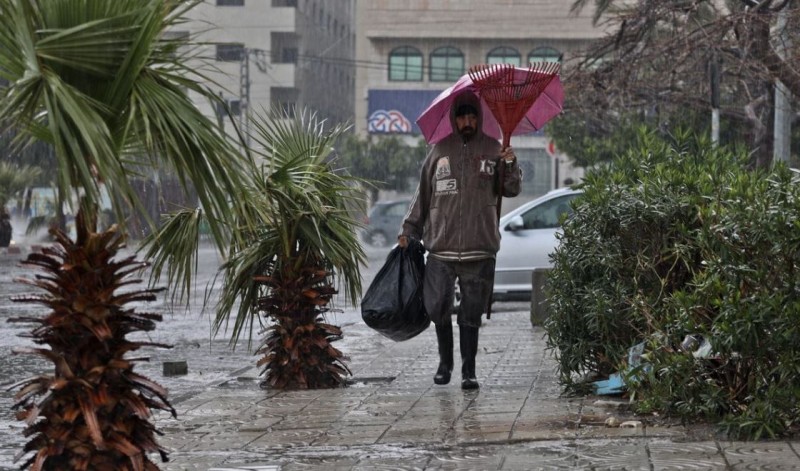
Heavy rainfall can bring about numerous challenges and potential dangers. It is essential to take appropriate safety measures to protect yourself, your family, and your property during such weather conditions. In this article, we will discuss effective ways to stay safe during heavy rainfall and minimize the risks associated with it.
Understanding the Risks of Heavy Rainfall
Heavy rainfall can lead to various hazards, including flooding, landslides, and water accumulation. These risks can cause damage to infrastructure, disrupt daily life, and pose threats to personal safety. By understanding the potential dangers, you can better prepare yourself to mitigate them effectively.
Preparing Before Heavy Rainfall
Stay informed: Keep an eye on weather forecasts and alerts issued by local authorities. Stay updated on any potential flood warnings or severe weather conditions.
Clear drains and gutters: Ensure that drains and gutters are free from debris to prevent water blockage and potential flooding.
Secure loose items: Secure or bring inside any outdoor items that may be susceptible to wind or water damage.
Create an emergency kit: Prepare an emergency kit that includes essential supplies such as food, water, medication, flashlights, batteries, and a first aid kit.
Develop an emergency plan: Discuss and establish an emergency plan with your family. Determine evacuation routes and designate a meeting point in case of separation.
During Heavy Rainfall
Stay indoors: It is safest to stay indoors during heavy rainfall. Avoid unnecessary travel and seek shelter in a sturdy building.
Monitor updates: Continuously monitor weather updates through a reliable source such as a radio, television, or smartphone app.
Avoid flood-prone areas: Do not attempt to walk or drive through flooded areas, as it can be dangerous and unpredictable. Turn around and find an alternate route.
Be cautious of lightning: If you are indoors, stay away from windows and avoid using electrical appliances. If you are outdoors, seek shelter in a building or car.
Beware of landslides: If you live in an area prone to landslides, be vigilant and stay away from steep slopes or areas with signs of ground movement.
After Heavy Rainfall
Assess the surroundings: Once the heavy rainfall subsides, assess the immediate surroundings for any visible damage or hazards.
Avoid flooded areas: Do not attempt to walk or drive through flooded areas until the water has receded.
Check for structural damage: Inspect your property for any signs of structural damage. If you notice any concerns, contact a professional for assessment and repairs.
Report hazards: Inform local authorities about any road damage, fallen trees, or other hazards that could pose risks to public safety.
Maintain hygiene: Practice good hygiene by washing your hands thoroughly after coming into contact with floodwater or contaminated surfaces.
Safety Precautions for Drivers
Slow down: Reduce your speed and maintain a safe distance from other vehicles on wet and slippery roads.
Use headlights: Turn on your headlights to enhance visibility for yourself and other drivers.
Avoid standing water: Do not drive through standing water, as it may be deeper than it appears and could cause your vehicle to stall.
Brake carefully: Apply gentle pressure on the brakes to avoid skidding or hydroplaning.
Stay updated: Be aware of road closures and traffic advisories. Follow the instructions provided by local authorities.
Safety Precautions for Pedestrians
Wear appropriate footwear: Choose shoes with good traction to prevent slipping on wet surfaces.
Use designated walkways: Stick to designated paths and sidewalks, avoiding areas with pooling water.
Be visible: Wear bright or reflective clothing to enhance visibility for drivers, especially in low-light conditions.
Stay away from water bodies: Avoid walking or playing near swollen rivers, streams, or drainage systems.
Stay alert: Pay attention to your surroundings and be cautious of vehicles that may have reduced visibility or difficulty maneuvering.
Safety Precautions for Homeowners
Inspect and maintain drainage systems: Regularly inspect and clean gutters, downspouts, and drains to ensure proper water flow.
Elevate valuable items: If you live in a flood-prone area, consider elevating valuable items or moving them to higher floors.
Install flood barriers or sandbags: In areas prone to flooding, consider using flood barriers or sandbags to redirect or absorb water.
Check insurance coverage: Review your homeowner's insurance policy to ensure it provides adequate coverage for potential flood-related damages.
Consult professionals: If you require assistance or advice on implementing flood prevention measures, consult with experts or local authorities.
By taking proactive measures and staying informed, you can significantly reduce the risks associated with heavy rainfall. Remember to prioritize your safety and the safety of those around you during inclement weather. Stay prepared, stay informed, and stay safe.
The Glass Armonica: Unveiling the Enchanting Sounds of Glass Music
Rupee Charges Ahead: Indian Currency Surges 6 Ps USDollar, Reflecting Investor Confidence
23 Airports Set for Major Upgrades to Boost Traffic and Elevate Travel Experience